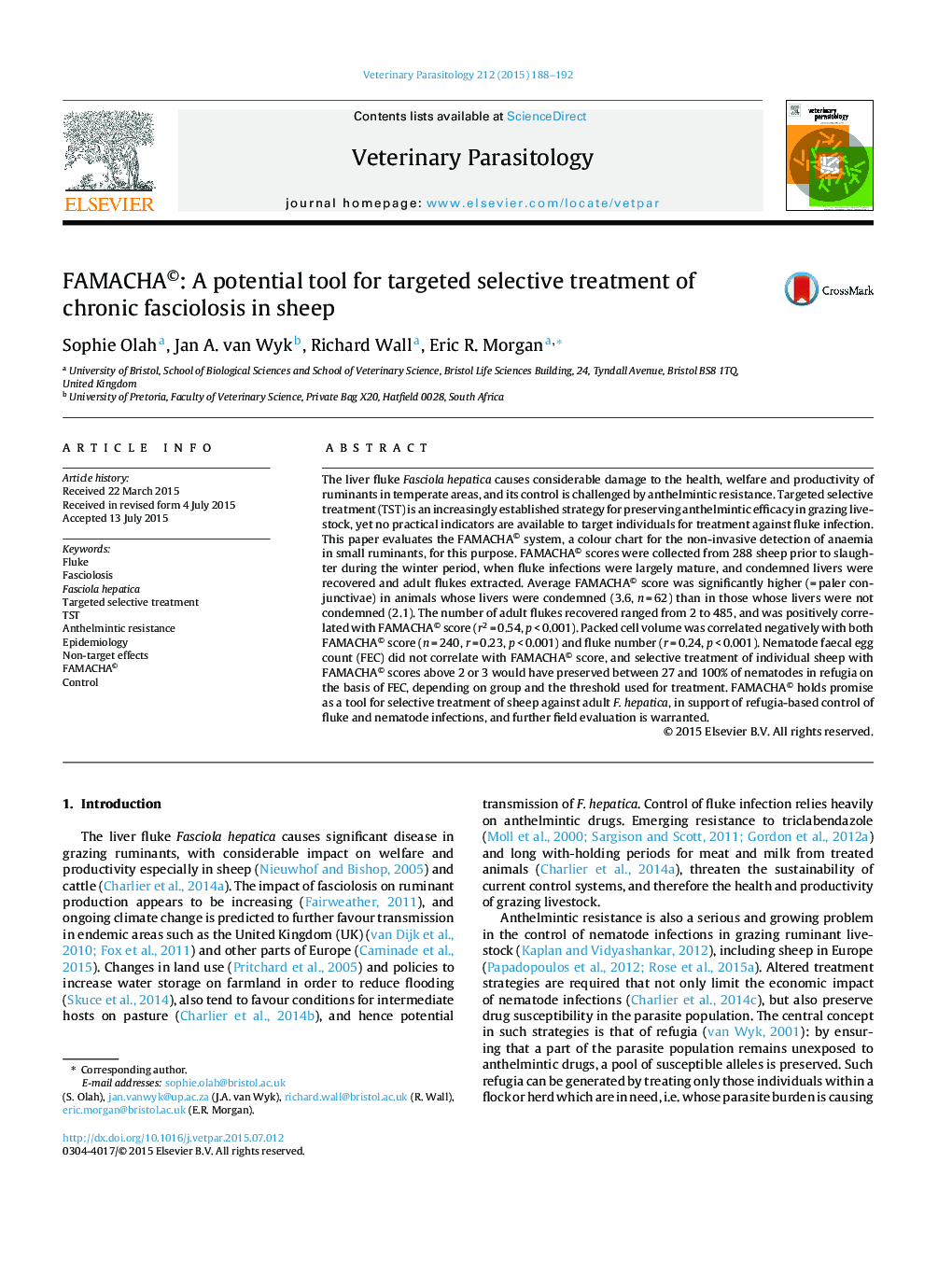| کد مقاله | کد نشریه | سال انتشار | مقاله انگلیسی | نسخه تمام متن |
|---|---|---|---|---|
| 5802349 | 1555666 | 2015 | 5 صفحه PDF | دانلود رایگان |

- Few indicators are available to help target treatment of liver fluke to affected individuals.
- The FAMACHA© system for indicating anaemia in sheep shows potential as such as indicator.
- Sheep whose livers were condemned had higher FAMACHA© scores than those whose livers were not condemned.
- FAMACHA© scores correlated positively with numbers of fluke extracted from condemned livers.
- Targeted treatment of sheep based on FAMACHA© could contribute to sustainable liver fluke and nematode control.
The liver fluke Fasciola hepatica causes considerable damage to the health, welfare and productivity of ruminants in temperate areas, and its control is challenged by anthelmintic resistance. Targeted selective treatment (TST) is an increasingly established strategy for preserving anthelmintic efficacy in grazing livestock, yet no practical indicators are available to target individuals for treatment against fluke infection. This paper evaluates the FAMACHA© system, a colour chart for the non-invasive detection of anaemia in small ruminants, for this purpose. FAMACHA© scores were collected from 288 sheep prior to slaughter during the winter period, when fluke infections were largely mature, and condemned livers were recovered and adult flukes extracted. Average FAMACHA© score was significantly higher (= paler conjunctivae) in animals whose livers were condemned (3.6, n = 62) than in those whose livers were not condemned (2.1). The number of adult flukes recovered ranged from 2 to 485, and was positively correlated with FAMACHA© score (r2 = 0.54, p < 0.001). Packed cell volume was correlated negatively with both FAMACHA© score (n = 240, r = 0.23, p < 0.001) and fluke number (r = 0.24, p < 0.001). Nematode faecal egg count (FEC) did not correlate with FAMACHA© score, and selective treatment of individual sheep with FAMACHA© scores above 2 or 3 would have preserved between 27 and 100% of nematodes in refugia on the basis of FEC, depending on group and the threshold used for treatment. FAMACHA© holds promise as a tool for selective treatment of sheep against adult F. hepatica, in support of refugia-based control of fluke and nematode infections, and further field evaluation is warranted.
Journal: Veterinary Parasitology - Volume 212, Issues 3â4, 15 September 2015, Pages 188-192